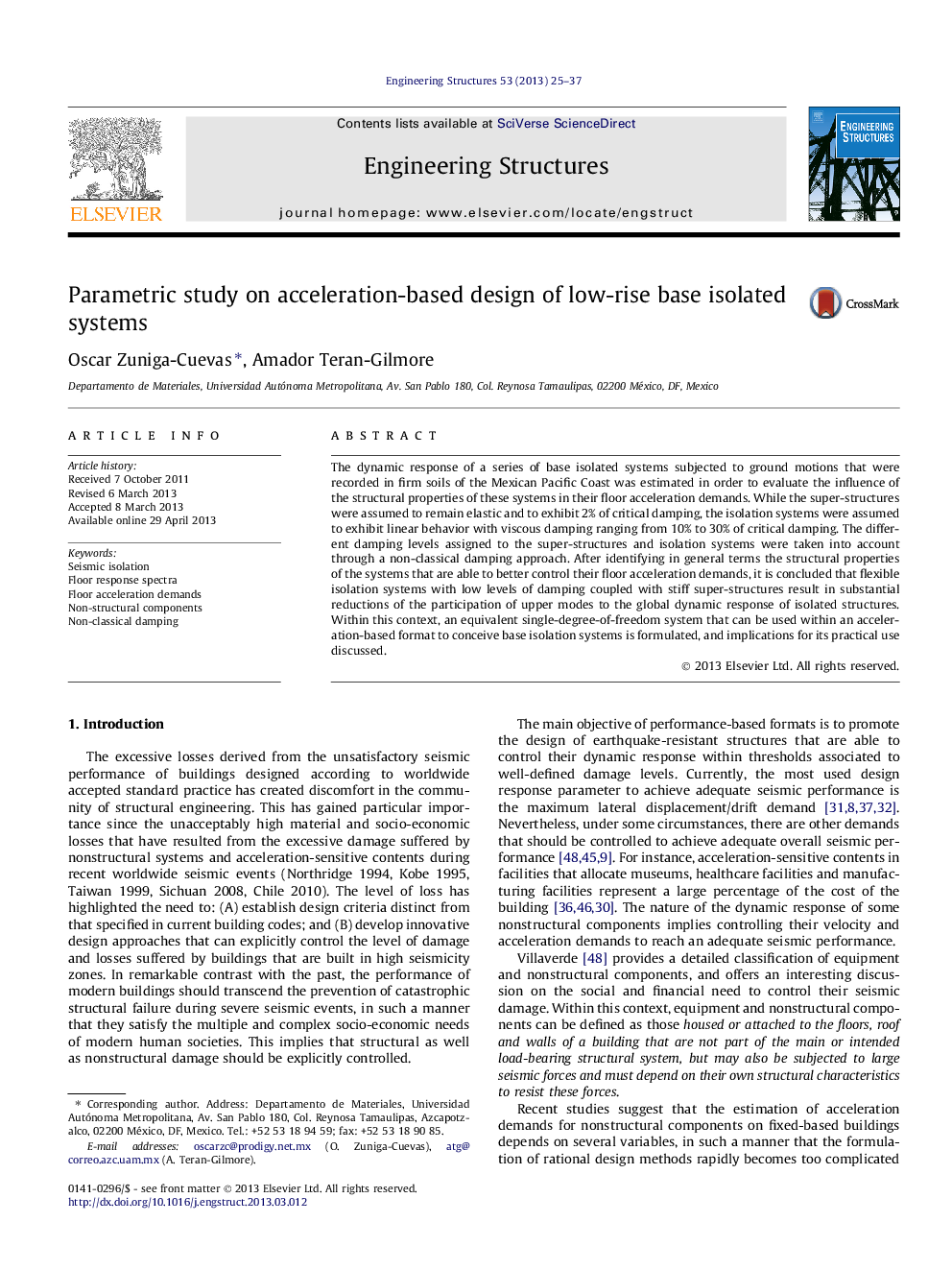| Article ID | Journal | Published Year | Pages | File Type |
|---|---|---|---|---|
| 267045 | Engineering Structures | 2013 | 13 Pages |
•Using an approach of non-classical damping we studied the behavior of isolation systems.•Control of floor acceleration can be possible through stiff structures in seismic isolated systems.•Increasing the damping level in the isolation system affect considerably the response of the upper modes.
The dynamic response of a series of base isolated systems subjected to ground motions that were recorded in firm soils of the Mexican Pacific Coast was estimated in order to evaluate the influence of the structural properties of these systems in their floor acceleration demands. While the super-structures were assumed to remain elastic and to exhibit 2% of critical damping, the isolation systems were assumed to exhibit linear behavior with viscous damping ranging from 10% to 30% of critical damping. The different damping levels assigned to the super-structures and isolation systems were taken into account through a non-classical damping approach. After identifying in general terms the structural properties of the systems that are able to better control their floor acceleration demands, it is concluded that flexible isolation systems with low levels of damping coupled with stiff super-structures result in substantial reductions of the participation of upper modes to the global dynamic response of isolated structures. Within this context, an equivalent single-degree-of-freedom system that can be used within an acceleration-based format to conceive base isolation systems is formulated, and implications for its practical use discussed.
